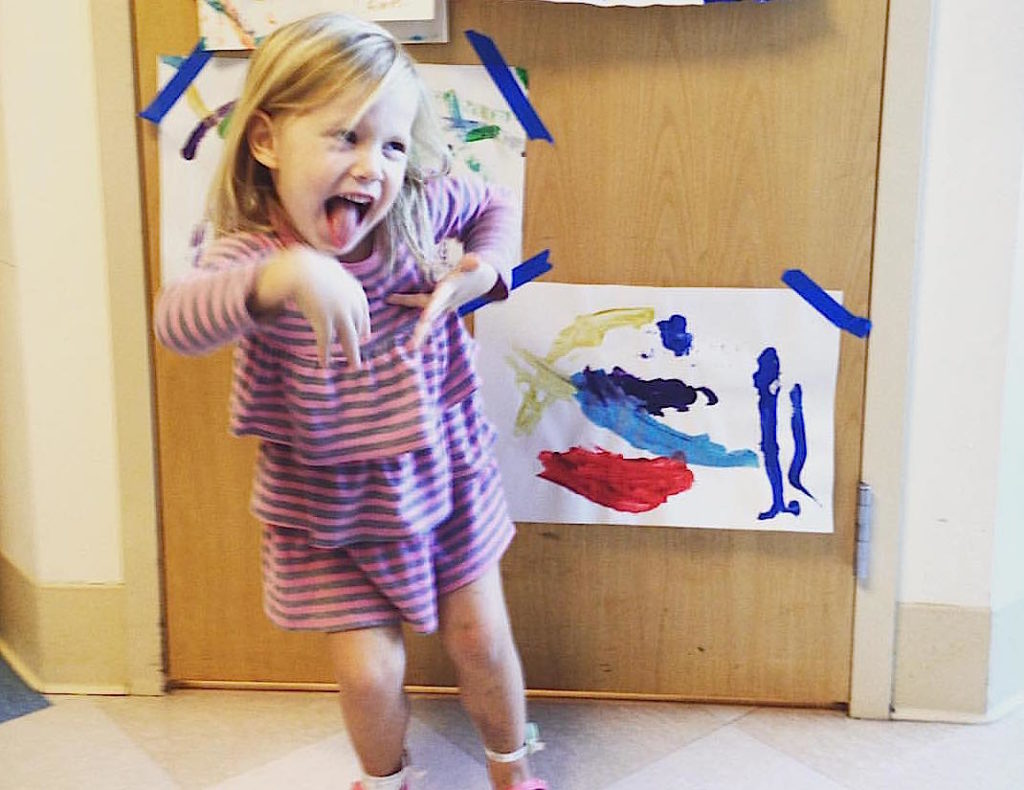Part Three: The Needles Aren’t the Hard Part
I know what you are thinking, reading these posts. “I don’t know how I would do it,” or some version of that. I don’t know how I could use my 3-year-old as a pin cushion anywhere from six to twelve times a day. I don’t know how I would handle the blood and the syringes. I just couldn’t do it.
The reality is you get over that part pretty quickly. I used to be terrified of needles. My step-mother likes to tell a very embarrassing, but no doubt amusing, story about a 12-year-old Kate who ran out of the exam room to avoid a routine vaccine. I would warn the phlebotomists that had the misfortune of dealing with me that I was going to sob the whole time, but they should just ignore me and get it done.
My first pregnancy took care of that, and any last remnants of needle phobia were banished when P looked up at me in the hospital and said, “I want momma to do it,” and the nurse handed me the syringe. Honestly, even P is almost over the pokes. She offers up her hand for testing, and picks the leg and wipes the injection site for the insulin, and we are only three weeks past diagnosis (dx). I sneak into her room every night at 9:00 p.m. and inject her Lantus, the slow-acting insulin that mimics the low level of insulin that the pancreas is supposed to be constantly producing (stupid pancreas), right into her belly, without her even waking up. The needles are no big thing.
The hard part is the constant high-stakes judgement calls. It seems like it should be easy, food in, insulin to match. Here I am, an adult woman functioning as my daughter’s pancreas. I should be able to do this. Easy peasy. Except, it isn’t. There is a lot of art in the science of diabetes management. Should we give a unit or a unit and half? Should we offer her another tangerine? Did she eat half of that sandwich or two thirds? If she was high at lunch but low before dinner was it because of activity levels or did we weigh something wrong? Should we test her at 3 a.m. again or try to let her sleep?

The hard part is separating out parenting moments from healthcare moments. Normally, in our house, when one of our kids is in the middle of having a big feeling, struggling with the realities of things like the word “no,” or having to wait—we sit with them and help them through it. We do our best to validate and make space for the feeling and the response while simultaneously reinforcing reasonable limits and, once the big feelings are out of our bodies, trying to use it as a teachable moment, (insert your judgements about my spacey, new-age parenting style here, and then shove it) but in this brave new post-dx world, I have to view every uncharacteristic behavior as a potential healthcare moment.
You can’t effectively parent a kid who has a blood sugar over 300, and a blood sugar under 60 can be potentially life threatening and requires immediate treatment. Short of pricking her finger and testing her, my only indication of how high or low her blood sugar is, is her behavior. I am now in the position, until we grow more confident, of having to threaten my child with a lancet if she can’t calm down independently. We misjudged a snack before going to the park a few days ago, and when it was time to leave P had a really hard time (normal), but she grew hysterical (less normal), and eventually was sobbing and screaming and kicking as I forced her into the stroller (way outside of normal). We tested and found that she was at 325 (normal blood sugars should be between 70 and 180 immediately following a meal). There was no reinforcing a reasonable limit. There was no teachable moment. It was a healthcare moment, not a parenting one. I felt the eyes of all of the other parents at the park as I strong armed her into the stroller that she was too big for, while she screamed all the way home.
The hard part is worrying, constantly, about what her life will look like long-term. There are so many unknowns out there, so many big scary unknowns, even without type 1 diabetes (T1D). When you add a chronic condition, with all of its complications, that requires constant and consistent treatment, the unknowns start to feel suffocating.
It was 1:30 a.m. Everyone was asleep except for me and Q. I had stumbled to the rocking chair with him to nurse. He snuggled in, made a sound that sounded a lot like a mischievous giggle, latched and began to nurse. I was flooded with a sense of well-being, a sense that no matter what other chaos my world held right now, this moment, alone feeding this sweet baby, was perfect. In almost the same breath, I was seized with panic: calories in, calories out, glucose, sugar, insulin. I stood up from my glider, securing Q to my breast with one arm and lunged for my phone. I frantically typed into my search bar: “can T1 diabetics breastfeed.” They can. My eyes filled with tears. I sunk back into my chair. I felt relief wash over me, for the moment.
They can breastfeed. They can, with a lot of support, get pregnant and have healthy pregnancies. They can travel the world. They can fail algebra. They can learn French. They can eat ice cream. They can be athletes, doctors and artists. They can make mistakes and make brave choices and have adventures.
They can even be pop stars. Just like Nick Jonas.
This story is the third installment of a series entitled “New Normal” from Kate Felton’s blog, Not Sure How Today Ends. Read the other installments of Kate’s New Normal series:





